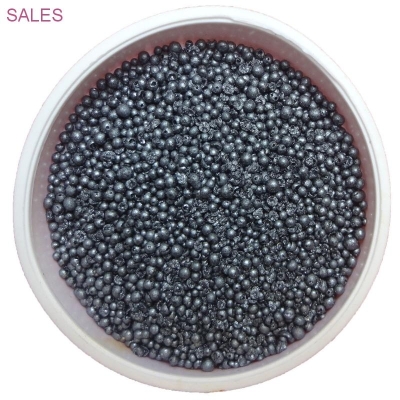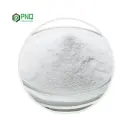-
Categories
-
Pharmaceutical Intermediates
-
Active Pharmaceutical Ingredients
-
Food Additives
- Industrial Coatings
- Agrochemicals
- Dyes and Pigments
- Surfactant
- Flavors and Fragrances
- Chemical Reagents
- Catalyst and Auxiliary
- Natural Products
- Inorganic Chemistry
-
Organic Chemistry
-
Biochemical Engineering
- Analytical Chemistry
- Cosmetic Ingredient
-
Pharmaceutical Intermediates
Promotion
ECHEMI Mall
Wholesale
Weekly Price
Exhibition
News
-
Trade Service
Edited by Yimaitong, please do not reprint without authorization.
Guide: On May 21st, the "2021 Frontier Advances in Endocrine and Metabolic Diseases Summit Forum" co-sponsored by the Chinese National Health Association and the Chinese Society for Geriatric Health Medicine was held in Tianjin.
The release of the "Expert Consensus on the Management of Type 2 Diabetes and Non-alcoholic Fatty Liver Disease in Adults in China" is undoubtedly one of the major content of this forum.
This consensus mainly includes 18 recommendations (see Table 1).
The core content of the "Consensus" includes three chapters: "Screening and evaluation of T2DM combined with NAFLD", "T2DM combined with NAFLD other metabolic risk and cardiovascular risk assessment" and "T2DM combined with NAFLD management".
Among them, pioglitazone is clearly recommended as the first-choice hypoglycemic drug for such patients.
In addition, there are also related recommendations for the classic drug metformin, the new hypoglycemic drugs SGLT-2i and GLP-1RA.
Table 1 After the release ceremony of the "Consensus" recommendation form, Professor Ji Qiuhe from Xijing Hospital of Air Force Military Medical University interpreted the key chapters.
Professor Ji Qiuhe delivered a speech.
Recommendations 1 It is recommended to use ordinary ultrasound to routinely screen NAFLD (A, I) in patients with T2DM; if conditions permit, use transient elastography (VCTE) to quantitatively detect liver steatosis, obese patients need to be cautious Explain the value (A, I) of the controlled attenuation parameter (CAP).
Professor Ji Qiuhe mentioned that the transient elastography of the liver is a technique that uses ultrasound to measure the propagation speed of shear waves in the liver tissue to measure the liver stiffness and reflect the degree of liver fibrosis.
Compared with ordinary ultrasound, it has certain advantages: ➤Transient liver elastography technology: as long as more than 5% of liver fat change can be detected, and can distinguish mild and moderate-severe liver steatosis; ➤abdominal ultrasound: low sensitivity , Specificity needs to be improved.
Recommendation 2 The NFS or FFIB-4 index can be used to clinically assess the degree of liver fibrosis (A, IIb) "Consensus" recommends that the NFS or FIB-4 index can be used to clinically evaluate the degree of liver fibrosis.
The relevant scoring methods are shown in the table below.
Table 2 Recommendations for several scoring methods for clinical evaluation of liver fibrosis 5 When T2DM patients with NAFLD have any of the following conditions at the same time: 1.
Obesity, abdominal obesity, dyslipidemia, hypertension, hyperuricemia, etc.
; 2 .
Unexplained liver enzymes continue to rise; 3.
Long-term drinking (regardless of whether the diagnostic criteria for ultimate fatty liver disease is reached), biopsy should be considered (C, IIa).
Screening methods mainly include invasive screening and non-invasive screening (see Figure 1).
Professor Ji Qiuhe emphasized the importance of evaluating liver, metabolism and extrahepatic target organs in patients with T2DM and NAFLD (see Figure 2).
Figure 1 Recommendations of clinical screening methods and procedures Figure 2 Recommendations for 3 key assessment contents of T2DM combined with NAFLD 8 It is recommended to establish a multidisciplinary team to effectively manage patients with T2DM combined with NAFLD (C, I) In the management of T2DM combined with NAFLD, The "Consensus" recommends the establishment of a multidisciplinary team for long-term and effective management of patients with T2DM combined with NAFLD.
Management and treatment mainly include 5 major aspects: ➤health knowledge education; ➤life>
Among them, for overweight/obese T2DM patients with NAFLD, it is recommended to reduce 7%-10% of total body weight, and the rate of weight loss can be controlled at 0.
5~1kg per week; when weight loss, caloric intake should be restricted, but avoid extreme Low-calorie diet (Recommendation 9, B, I) Drug recommendations for patients with T2DM combined with NAFLD-Pioglitazone is the first choice, DPP-4i is not recommended.
The therapeutic effects of various hypoglycemic drugs on NAFLD are shown in Table 1.
"Consensus" recommends: Pioglitazone is the first choice for T2DM patients with NAFLD.
The combined treatment of pioglitazone and metformin can bring greater clinical benefits to patients with T2DM combined with NAFLD (Recommendation 13: B, IIa) Table 2 The evidence related to the therapeutic effect of various hypoglycemic drugs on NAFLD: ➤Pioglitazone can improve T2DM combined The extent of liver disease in NASH patients: A randomized, placebo-controlled study compared pioglitazone and placebo on 55 patients with impaired glucose tolerance or T2DM with NASH on the basis of a low-calorie diet.
The results showed that compared with placebo, pioglitazone treatment for 6 months can restore adiponectin to normal, and can reduce liver fat content (reduction ratio: 0% vs.
54%, P<0.
001), and increase liver insulin sensitivity ( Increase ratio: 14% vs.
48%, P=0.
008).
In addition, the changes in the average scores of inflammation, balloon necrosis, steatosis, and fibrosis of the patients’ liver biopsy samples were compared.
It was found that pioglitazone can improve the pathological changes of the patient's liver and reduce necrotizing inflammation (reduction ratio: 38% vs.
85%, P=0.
001), and can significantly prevent the progression of fibrosis.
➤Metformin treatment of NAFLD/NASH can improve liver inflammation: A number of studies have shown that metformin can improve liver serum ALT, so it is especially suitable for patients with NAFLD/NASH and T2DM.
Guide: On May 21st, the "2021 Frontier Advances in Endocrine and Metabolic Diseases Summit Forum" co-sponsored by the Chinese National Health Association and the Chinese Society for Geriatric Health Medicine was held in Tianjin.
The release of the "Expert Consensus on the Management of Type 2 Diabetes and Non-alcoholic Fatty Liver Disease in Adults in China" is undoubtedly one of the major content of this forum.
This consensus mainly includes 18 recommendations (see Table 1).
The core content of the "Consensus" includes three chapters: "Screening and evaluation of T2DM combined with NAFLD", "T2DM combined with NAFLD other metabolic risk and cardiovascular risk assessment" and "T2DM combined with NAFLD management".
Among them, pioglitazone is clearly recommended as the first-choice hypoglycemic drug for such patients.
In addition, there are also related recommendations for the classic drug metformin, the new hypoglycemic drugs SGLT-2i and GLP-1RA.
Table 1 After the release ceremony of the "Consensus" recommendation form, Professor Ji Qiuhe from Xijing Hospital of Air Force Military Medical University interpreted the key chapters.
Professor Ji Qiuhe delivered a speech.
Recommendations 1 It is recommended to use ordinary ultrasound to routinely screen NAFLD (A, I) in patients with T2DM; if conditions permit, use transient elastography (VCTE) to quantitatively detect liver steatosis, obese patients need to be cautious Explain the value (A, I) of the controlled attenuation parameter (CAP).
Professor Ji Qiuhe mentioned that the transient elastography of the liver is a technique that uses ultrasound to measure the propagation speed of shear waves in the liver tissue to measure the liver stiffness and reflect the degree of liver fibrosis.
Compared with ordinary ultrasound, it has certain advantages: ➤Transient liver elastography technology: as long as more than 5% of liver fat change can be detected, and can distinguish mild and moderate-severe liver steatosis; ➤abdominal ultrasound: low sensitivity , Specificity needs to be improved.
Recommendation 2 The NFS or FFIB-4 index can be used to clinically assess the degree of liver fibrosis (A, IIb) "Consensus" recommends that the NFS or FIB-4 index can be used to clinically evaluate the degree of liver fibrosis.
The relevant scoring methods are shown in the table below.
Table 2 Recommendations for several scoring methods for clinical evaluation of liver fibrosis 5 When T2DM patients with NAFLD have any of the following conditions at the same time: 1.
Obesity, abdominal obesity, dyslipidemia, hypertension, hyperuricemia, etc.
; 2 .
Unexplained liver enzymes continue to rise; 3.
Long-term drinking (regardless of whether the diagnostic criteria for ultimate fatty liver disease is reached), biopsy should be considered (C, IIa).
Screening methods mainly include invasive screening and non-invasive screening (see Figure 1).
Professor Ji Qiuhe emphasized the importance of evaluating liver, metabolism and extrahepatic target organs in patients with T2DM and NAFLD (see Figure 2).
Figure 1 Recommendations of clinical screening methods and procedures Figure 2 Recommendations for 3 key assessment contents of T2DM combined with NAFLD 8 It is recommended to establish a multidisciplinary team to effectively manage patients with T2DM combined with NAFLD (C, I) In the management of T2DM combined with NAFLD, The "Consensus" recommends the establishment of a multidisciplinary team for long-term and effective management of patients with T2DM combined with NAFLD.
Management and treatment mainly include 5 major aspects: ➤health knowledge education; ➤life>
Among them, for overweight/obese T2DM patients with NAFLD, it is recommended to reduce 7%-10% of total body weight, and the rate of weight loss can be controlled at 0.
5~1kg per week; when weight loss, caloric intake should be restricted, but avoid extreme Low-calorie diet (Recommendation 9, B, I) Drug recommendations for patients with T2DM combined with NAFLD-Pioglitazone is the first choice, DPP-4i is not recommended.
The therapeutic effects of various hypoglycemic drugs on NAFLD are shown in Table 1.
"Consensus" recommends: Pioglitazone is the first choice for T2DM patients with NAFLD.
The combined treatment of pioglitazone and metformin can bring greater clinical benefits to patients with T2DM combined with NAFLD (Recommendation 13: B, IIa) Table 2 The evidence related to the therapeutic effect of various hypoglycemic drugs on NAFLD: ➤Pioglitazone can improve T2DM combined The extent of liver disease in NASH patients: A randomized, placebo-controlled study compared pioglitazone and placebo on 55 patients with impaired glucose tolerance or T2DM with NASH on the basis of a low-calorie diet.
The results showed that compared with placebo, pioglitazone treatment for 6 months can restore adiponectin to normal, and can reduce liver fat content (reduction ratio: 0% vs.
54%, P<0.
001), and increase liver insulin sensitivity ( Increase ratio: 14% vs.
48%, P=0.
008).
In addition, the changes in the average scores of inflammation, balloon necrosis, steatosis, and fibrosis of the patients’ liver biopsy samples were compared.
It was found that pioglitazone can improve the pathological changes of the patient's liver and reduce necrotizing inflammation (reduction ratio: 38% vs.
85%, P=0.
001), and can significantly prevent the progression of fibrosis.
➤Metformin treatment of NAFLD/NASH can improve liver inflammation: A number of studies have shown that metformin can improve liver serum ALT, so it is especially suitable for patients with NAFLD/NASH and T2DM.







